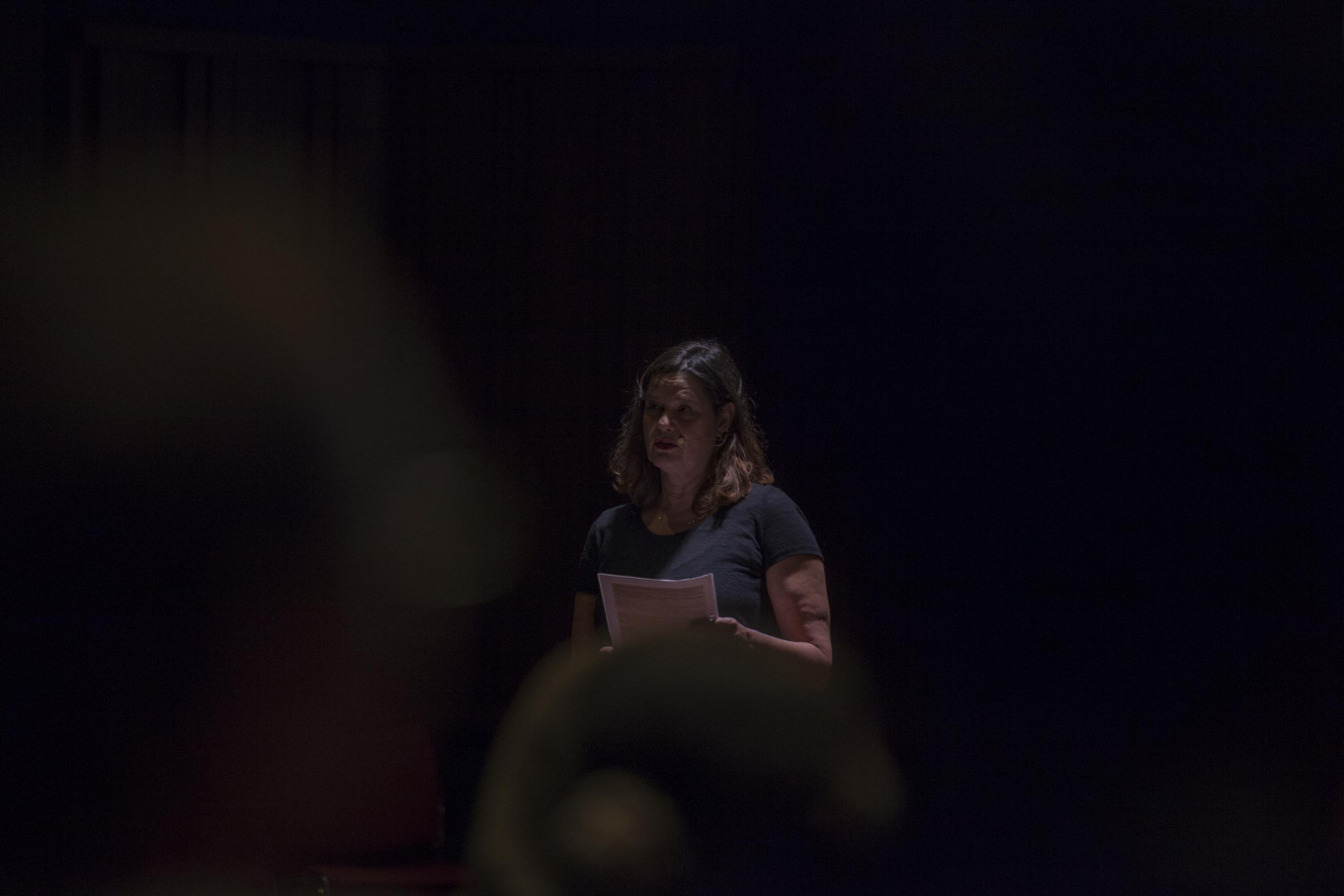Popular Reads
Top Results
Can't find what you're looking for?
View all search resultsPopular Reads
Top Results
Can't find what you're looking for?
View all search resultsPhotojournalism in the post-truth era
Change text size
Gift Premium Articles
to Anyone
I
n today’s era of fake news, artificial intelligence and limitless computing power, verifying what is true is a hard task for the public.
Dutch photography curator Jenny Smets believes that the line between artist and journalist is slowly fading because visual language faces new challenges to change in the digital age.
Smets explored the concept of truth in depth in her recent seminar Future Scenarios: Fact, Fiction and Friction at the Erasmus Huis in Jakarta.
Her seminar looked at the trending topics and developments in modern documentary photography, showcasing works from various international photojournalists such as Cristina de Middel, Mandy Barker and Robin Hammond.
In compiling the collection of works, Smets traveled all around the world – including to Indonesia, Turkey and different cities in the United States and Europe – with the World Press Photo Foundation in 2018.
During Smets’ travels, she attended several photo festivals, looking at the similarities in the themes presented in the exhibitions.
Smets said one recurring theme was the concept of the Anthropocene era.
The theory of the Anthropocene era states that rapid industrialization has propelled mankind into a new geological era. With the actions of humans defining the whole planet’s dynamics.
“The Anthropocene era is a geological era in which we have lived now for a relatively long time,” said Smets, who is an independent curator of photography exhibitions, as well as trainer and director of photography of Vrij Nederland magazine.
“It is the era in which man’s actions – on our planet, on earth – are influencing nature and fauna more and more. Eventually, it will influence our own future, the future of mankind, and this can be in a positive or negative way.”
In the seminar Smets presented the work of Spanish documentary photographer Cristina de Middel, whose photo collection Excessocenus explores the exploitation of natural resources in Africa through a series of elaborately set up photographs.
The Distribution of Wealth. (Excessocenus.com/Cristina de Middel)“I went from Nepal to France to everywhere, but the same issues were all being talked about,” Smets said.
“These recurring themes are everywhere in the world, so this is something that is obviously fascinating us.”
In addition to Smets’ seminar, the Erasmus Huis also celebrated the Permata Photojournalist Grant 2018 (PPG) on the same day.
The PPG is a program for aspiring photojournalists to showcase their work. The 10 participants, each of which has some form of photography or journalism background, were given the topic of diversity and two months to produce their own photo story.
After the two months concluded, the Erasmus Huis hosted workshops in which Smets helped the participants create a story out of their photographs.
“After they [PPG participants] finish shooting they have a huge number of photographs, but they are not edited, its not the story yet,” Smets said.
“So, you have the most basic ingredients, the photographs. The most difficult part I think is how you make a story out of these building blocks.”
Bayu Eka Novanta, a participant in PPG 2018 and a freelance photographer from Malang, East Java, says that working with Smets was an amazing experience.
For the grant, Bayu made a story about former transgender sex workers who now live with their children and have turned to religion.
“Jenny arranged my photos, they are more organized and the message was very deep,” Bayu said.
Another photojournalist in the PPG, Aprillio Abdullah Akbar, said that Smets pushed them as photographers to deeply consider their choices.
“[Smets] was always asking me as a photographer who made these photos, about for whom this photo story was made,” Aprillio said.
“So, what I do can be understood by me as a photographer and by the audience as a photo viewer.”
Aprillio worked on a story called “Resilient”, which tells the story of the mission of the Ciliwung Rawajati Women’s School for gender equality. The school uses education as a solution to overcome domestic violence.
The photo stories produced from the PPG program will be shown to the public from March 20.
Smets said she hoped the PPG program would help expand photojournalism in Southeast Asia.
“I think what I am doing here is trying to educate. What I am doing here is a very important program to make sure they can tell their own stories instead of us coming here and telling it for them.” (hdt)
The writer is an intern at The Jakarta Post












